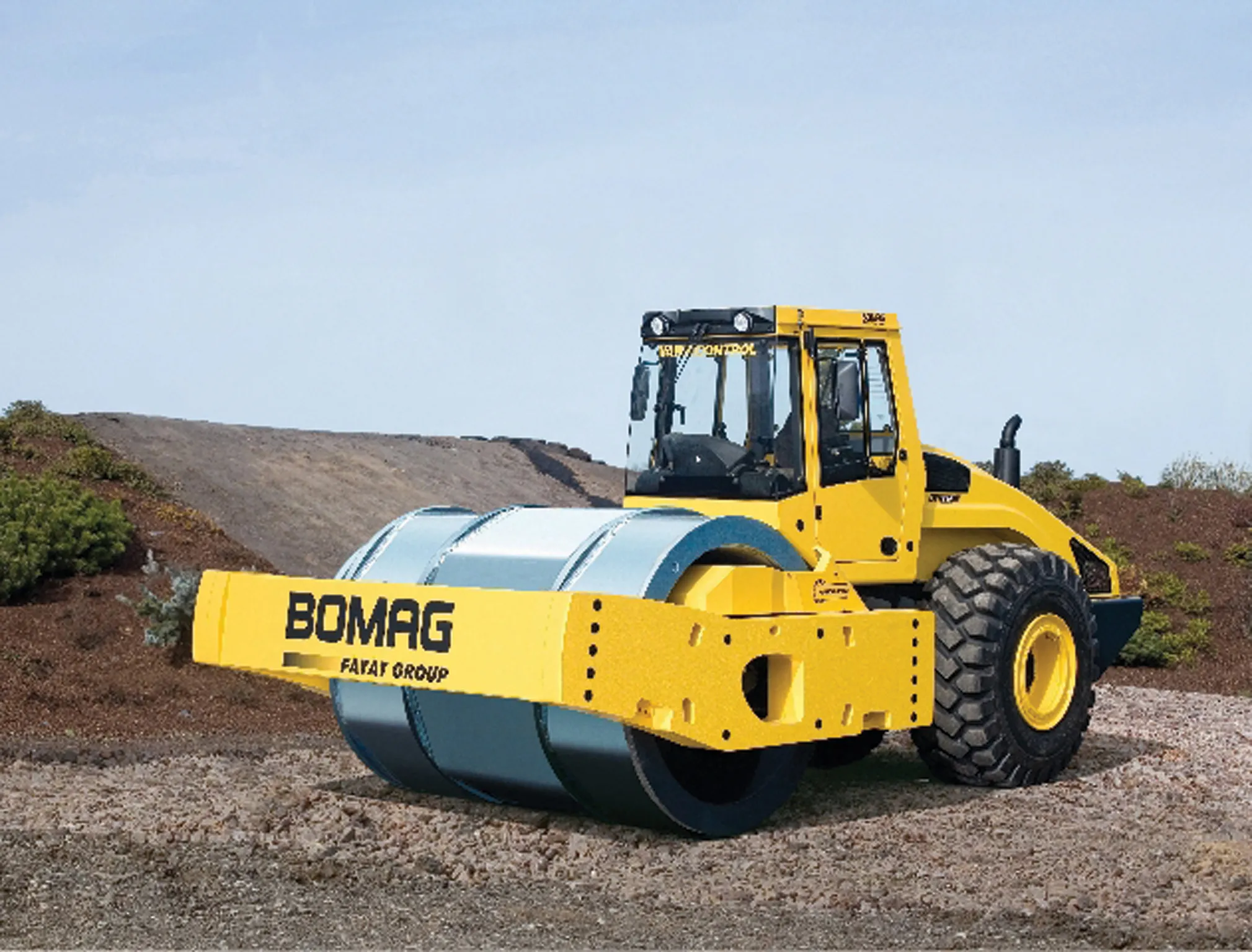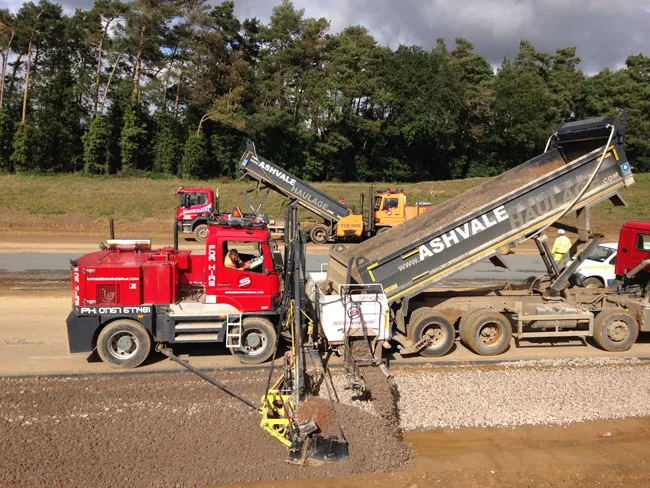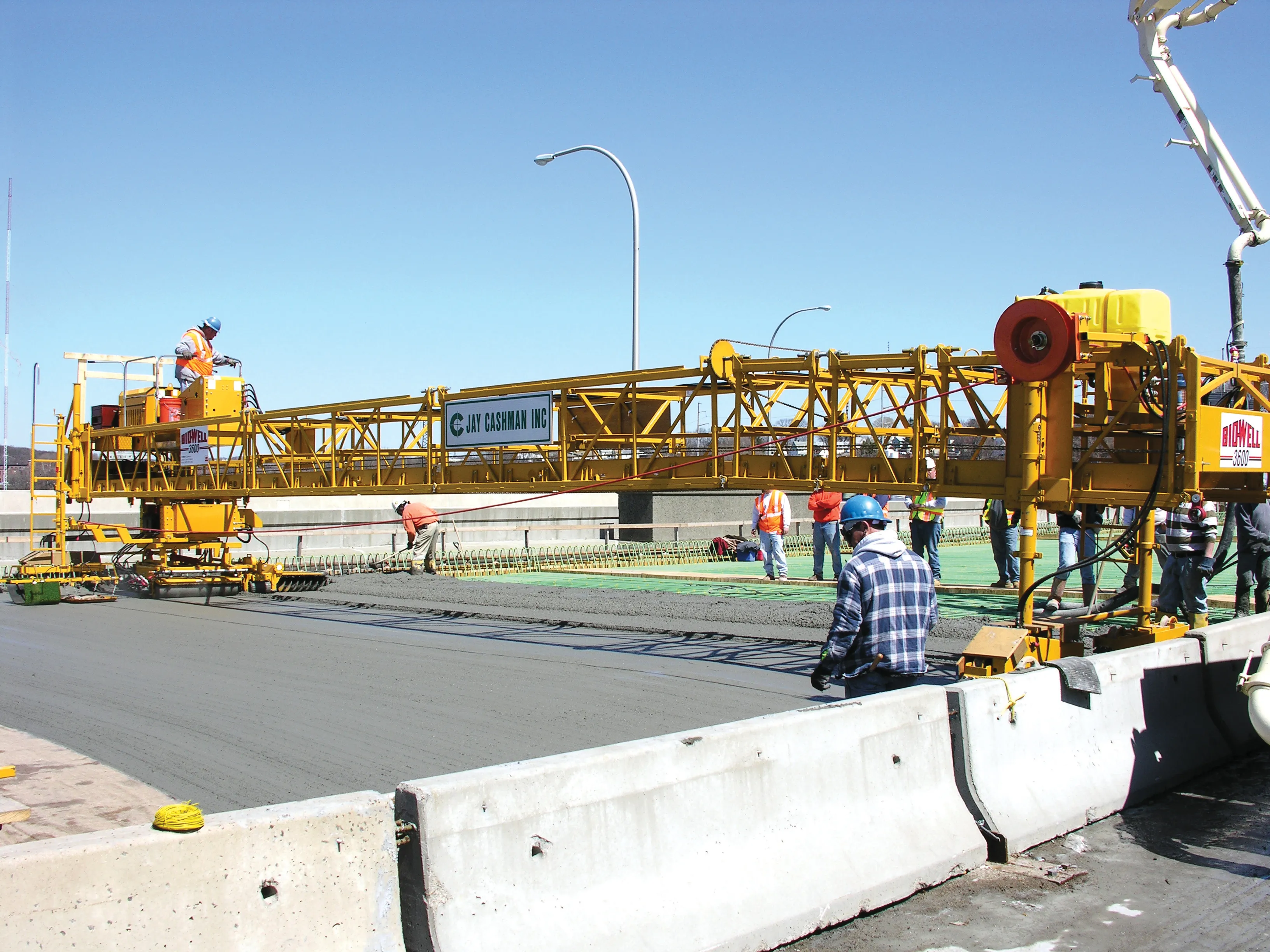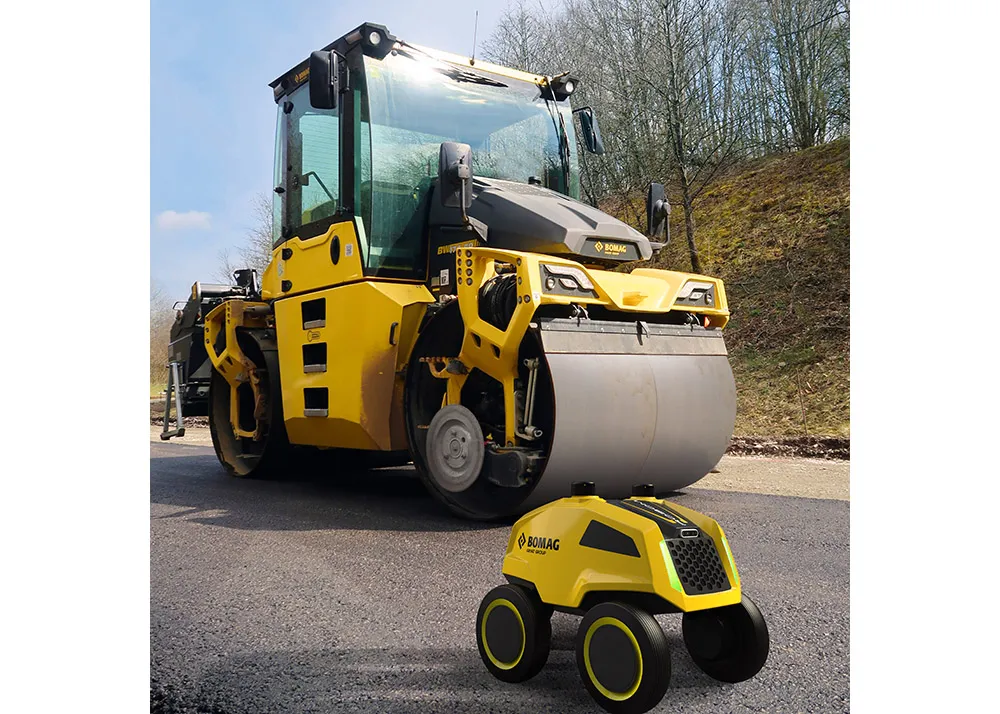Soil compaction BOMAG is pushing technological boundaries in the soil compaction sector with the market introduction of its giant 32tonne machines, which was shown in prototype/concept form at bauma in 2007. According to the firm the concept model attracted considerable interest and the company opted to develop the unit for series production. The new BW332 single drum roller is now the heaviest such machine on the market.
February 10, 2012
Read time: 3 mins

Offerng high performance and efficiency, the BW332 delivers 100kg/cm of static linear load, an amplitude of 3.3mm, a centrifugal force of 750kN and a working width of 2.4m. A highly visible and innovative feature is the polygonal drum, while the machine also comes with BOMAG's VARIOCONTROL vibration system. BOMAG claims that the BW332 offers 50% more compaction performance than its 26tonne BOMAG BW226, which was previously the heavies soil compactor available. The BW332 also offers 35% more compaction depth and in trials has shown itself able to deliver compaction to depths of 4m, which was previously only possible using other methods.
This roller is said to combines maximum performance with minimum costs/m3 for large earthworks applications. Up to now, existing subsoil often had to removed, stored temporarily and then re-laid and compacted in layers.
Tests showed that conventional smooth roller drums would not work efficiently with the forces being generated. The drum would sink and vibration energy would be dissipated at the surface, which is why BOMAG developed its patented polygonal drum design. This novel design features plates and angles, so that compaction forces are directed vertically into the material without vibration losses. This is said to generate optimum traction as well as low rolling resistance, while the polygonal drum is also self-cleaning and does not require scrapers. The rolled output increases by 15% using the polygonal drum's 2.4m working width and combined with its 35% greater depth, this is said to give the BW332 50% higher overall performance than the BOMAG BW226. The new single drum roller delivers vibration forces equivalent to 75tonnes.
The machine features BOMAG's VARIOCONTROL vibration system, which automatically adjusts vibration to soil stiffness for optimum and uniform compaction. The vibration can be progressively adjusted to give minimal surface compaction up to maximum depth effect.
This innovative piece of equipment is designed for use on the very largest construction projects and is well-suited to applications such as preparing the base for airport runway construction. It offers a doubling of achievable compaction depth over existing machines, which will help make major changes in the way large projects are carried out. Running such a powerful machine will offer economies of scale to large construction project according to BOMAG, as a single soil compactor will be able to carry out work that would otherwise require the use of two or more conventionally-sized units.
The market introduction of this new BOMAG soil compactor will require civil engineers and site managers to rethink changes as the machine can compact to a much greater depth.









